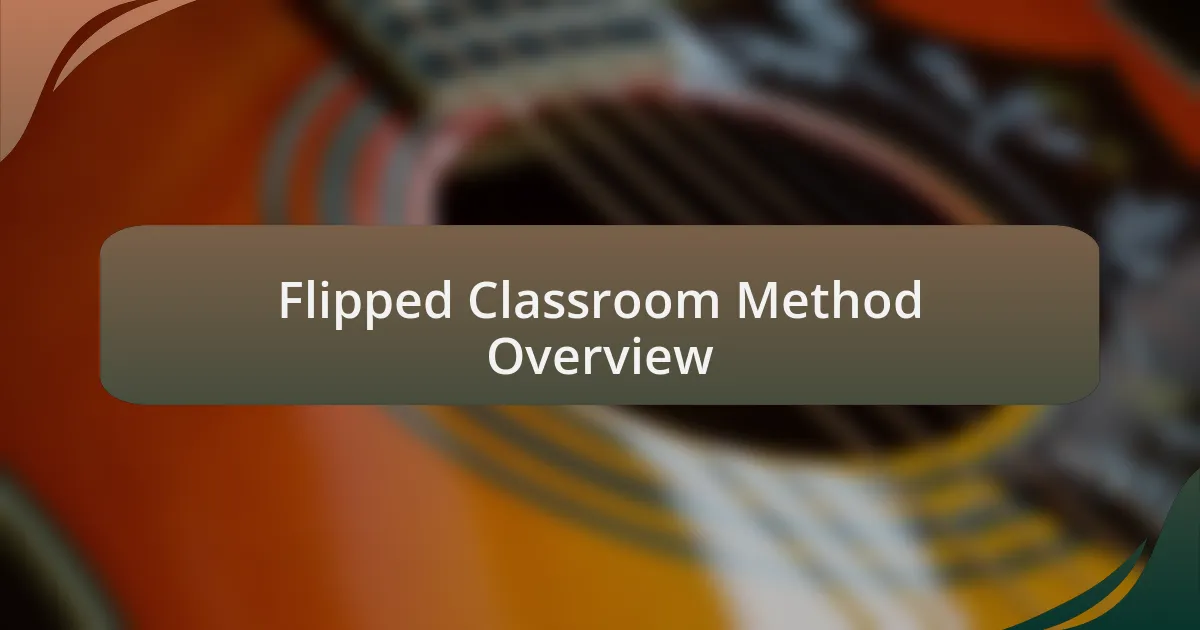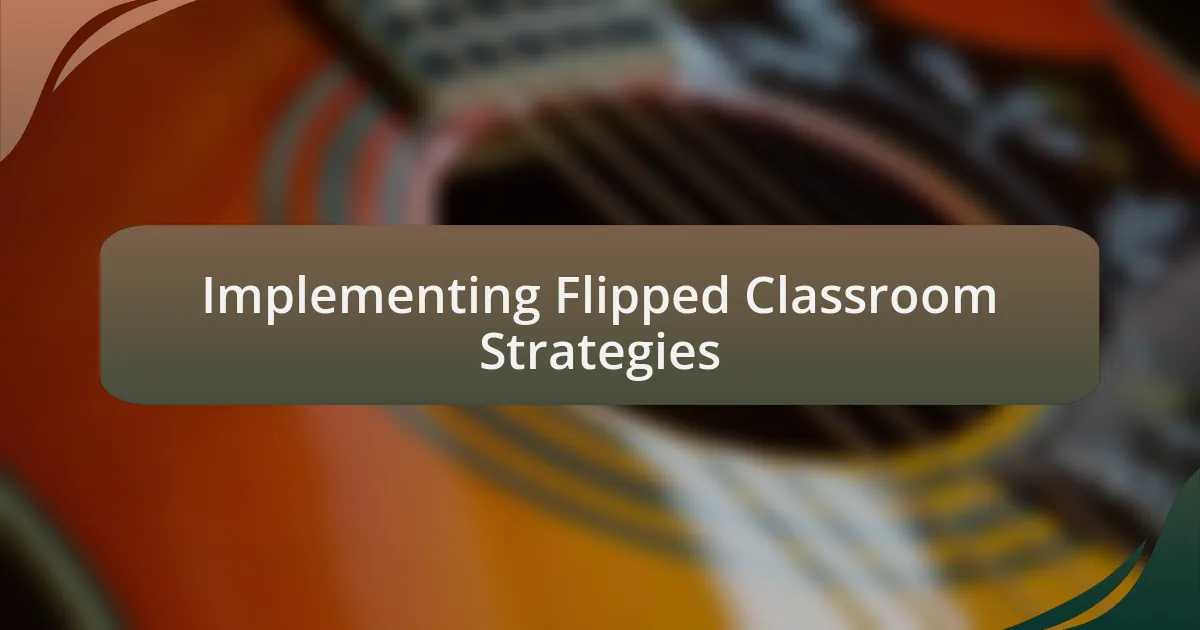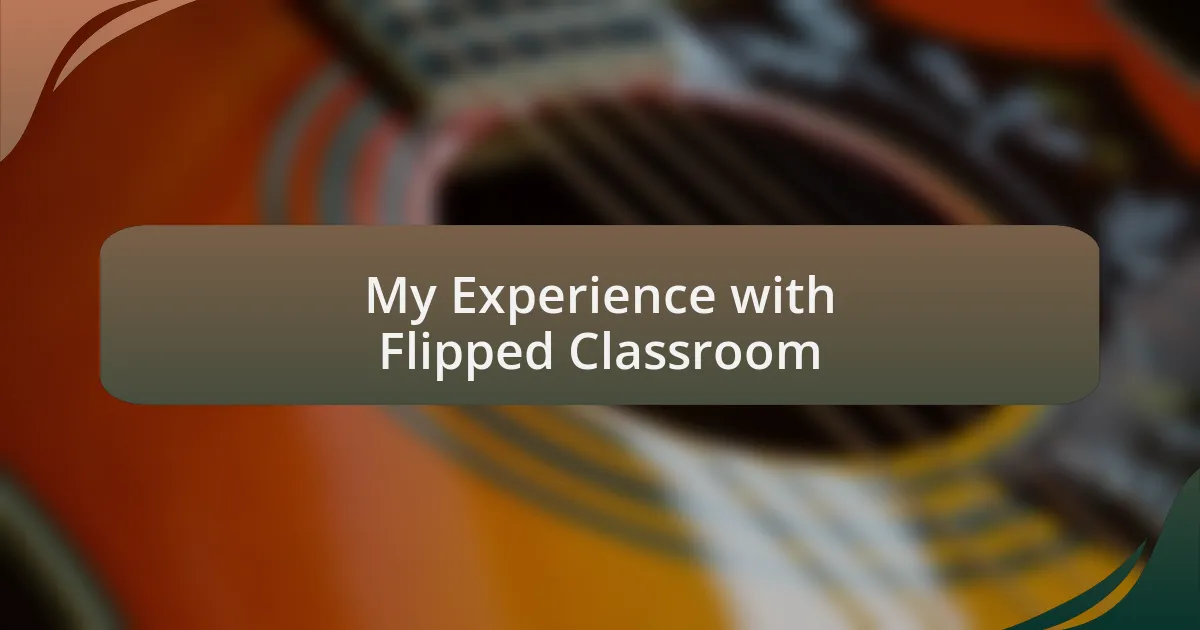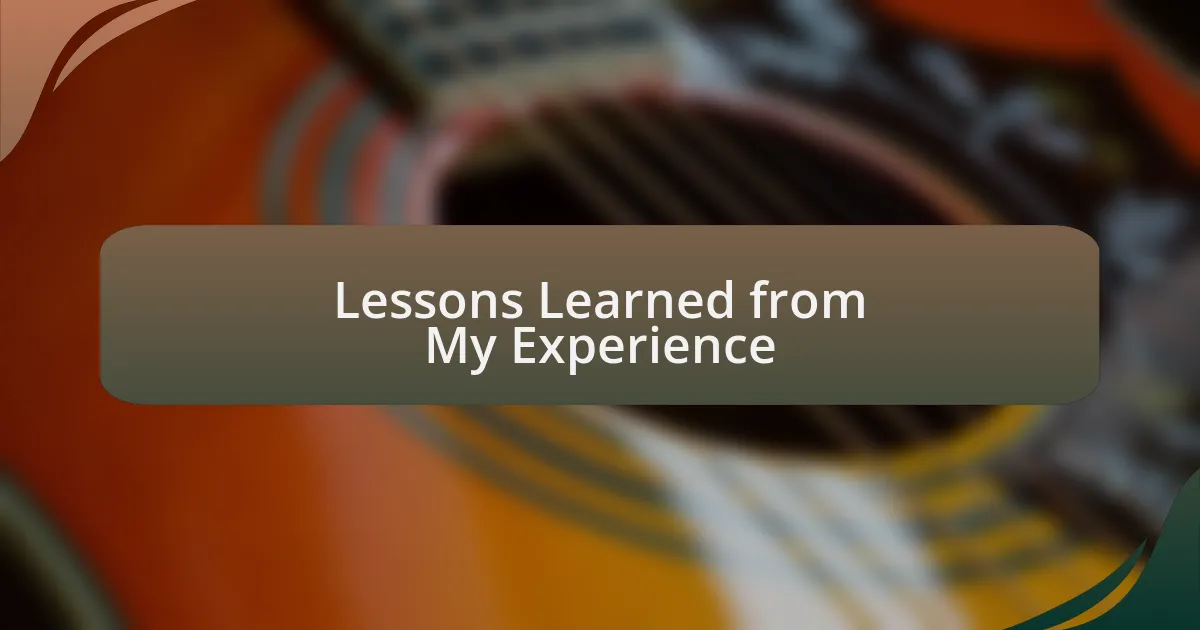Key takeaways:
- The flipped classroom method fosters student independence and deeper understanding by allowing learners to engage with material at home and collaborate during class.
- Clear expectations and the integration of technology enhance student engagement and contribute to a supportive learning environment.
- Adaptability and responsiveness to student needs are crucial for successful implementation, as seen through spontaneous discussions that boost understanding.
- Peer-to-peer interaction and creating a safe classroom atmosphere empower students, promoting ownership of their learning experiences.

Flipped Classroom Method Overview
The flipped classroom method revolutionizes traditional learning by allowing students to engage with new material at home, often through videos or readings, while class time is dedicated to active problem-solving and discussions. I remember the first time I tried this approach; students would come into class buzzing with questions about the material they had explored the night before. It was invigorating to witness their enthusiasm and how it fostered a sense of ownership over their learning journey.
This method not only promotes student independence but also encourages deeper understanding, as learners can absorb content at their own pace. Have you ever felt overwhelmed when trying to grasp a difficult concept during class? I’ve experienced that frustration firsthand, and that’s why I appreciate how the flipped classroom lets students revisit challenging topics until they feel confident enough to discuss them with peers.
Additionally, this approach can foster collaboration among students, as they often work together during class on projects or problem-solving activities. I vividly recall a moment when a group of students, who usually sat quietly, came alive as they tackled a music theory challenge, bouncing ideas off each other. It was a beautiful reminder of how the right environment can bring out the best in learners and transform a classroom into a vibrant community.

Implementing Flipped Classroom Strategies
Implementing flipped classroom strategies in music education can be a game changer. For instance, when I assigned a video on basic music theory for homework, I was thrilled to see students arrive with varying levels of understanding. One student, who typically struggled with notation, surprised me by teaching others about rhythmic patterns. Watching them grow from passive learners to active participants was incredibly rewarding and highlighted the potential of this method in fostering peer teaching.
To ensure the success of a flipped classroom, clear expectations are essential. I always provide a checklist of what I expect students to explore at home. The first time I used this approach, I noticed that students often engaged more deeply with the material when they knew they would need to contribute in class. It made me wonder how many more students could thrive if we adapted our teaching strategies to better suit their learning styles.
Additionally, integrating technology can enhance this experience. I recall setting up a class discussion forum where students could post questions about the video prior to our next session. This not only prepared me to address their concerns effectively but also fostered a sense of community among them. How often do we overlook the power of technology in creating a collaborative learning space? My experience suggests we shouldn’t underestimate its impact on students’ confidence and understanding.

My Experience with Flipped Classroom
One particular project stands out when I think back on my experience with the flipped classroom method. I assigned students to watch a series of instructional videos on improvisation techniques. During our next class, I could see their excitement and nervousness as they took turns improvising in front of their peers. I found it fascinating how the videos not only provided foundational knowledge but also empowered them to express themselves creatively in real time.
I remember one session where a shy student surprised us all by stepping up to the microphone. Her confidence had blossomed after engaging with the video content at home. It made me reflect on how the flipped classroom not only reshaped the learning structure but also contributed to personal growth. Isn’t it incredible how a simple shift in approach can lead to such transformative moments?
As I continued to refine my strategies, I started incorporating student feedback into the process. I asked them to share how they felt about the videos and what topics they wanted to dive deeper into. The insights I gained were invaluable. This two-way communication not only kept students engaged but also reinforced the idea that their voices mattered. How often do we give students the platform to shape their learning experience? My journey with the flipped classroom has shown me the profound impact of fostering such an environment.

Lessons Learned from My Experience
Implementing the flipped classroom method taught me the importance of preparation and adaptability. I had one instance where I needed to adjust the lesson midway through because students were struggling with a particular concept. Instead of sticking rigidly to my plan, I spontaneously facilitated a group discussion. Watching them collaborate and support one another was a vivid reminder that flexibility can enhance learning outcomes.
Another critical lesson was the power of peer-to-peer interaction. I noticed that when students shared their interpretations of the videos, it deepened their understanding and fostered a collaborative spirit. I still recall the moment when a group of students started forming study circles outside class to discuss what they learned. That level of ownership is something I hadn’t anticipated. Isn’t it fascinating how students can become the best teachers for one another?
Lastly, I’ve learned that building a safe, open environment is essential for maximizing the flipped classroom’s potential. One day, I noticed a student hesitating to share his thoughts after a session. I encouraged him to open up about his concerns. That simple act not only alleviated his anxiety but also inspired others to express their own fears. It was an eye-opener for me—creating a supportive classroom atmosphere can lead to powerful learning experiences that put every student on a path to success.